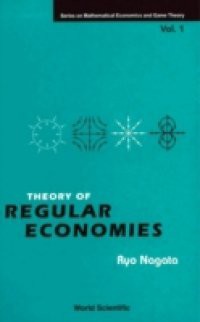This book presents a comprehensive treatment of the theory of regular economies, which is one of the most advanced topics in modern general equilibrium theory, emphasizing the basic ideas, the tools and the important applications. Although many notions and tools of differential topology are required to understand the theory, the author chooses a minimum of them and heuristically arranges them; that is, instead of lumping together all the necessary mathematics, the author puts at the beginning of each chapter the minimum mathematics required for the economic analysis of the chapter, so that the reader will not only save much effort on the mathematics but also directly understand how successfully the mathematics is used for the economic issues.Contents:Foundations of Regular Economies:What Is a Regular Economy?Regular Economies and GenericityFormalization of Regular EconomiesThe Number of Equilibria in Regular EconomiesStability of Equilibria in Regular EconomiesTransversality and Regular Economies:Space of Utility FunctionsTransversality and Regular EconomiesTransversality Theorems and Regular EconomiesThe Number of Extended Equilibria in Regular EconomiesDevelopments of Regular Economies:Production Economy with Linear ActivitiesIncomplete Markets IIncomplete Markets IIReadership: Upper level undergraduates, graduate students and researchers involved with the application of mathematics to economic analysis.

